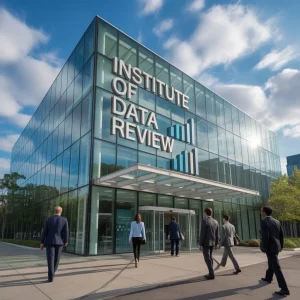
In the Internet era, the distinction between real and artificial content is getting more blurred. Among the most important in the recent years is the rising of deepfakes – AI-generated content that makes it seem that real persons can talk, move, and look like they did. Although there is a potential of this technology with regard to entertainment and creative industries, there have been grave concerns regarding misinformation, fraud and privacy intrusions. With the deepfakes getting more advanced, there is a competition to create the most advanced instruments to detect deepfakes.
What Are Deepfakes?
Deepfakes are artificial media that is developed based on deep learning methods, specifically Generative Adversarial Networks (GANs). Through these networks, it is possible to analyze and recreate the facial expressions, voice patterns, and gestures of the actual person and create a video or an audio clip that seems to be a real person. The effect is the creation of an almost hyper-realistic depiction that can almost be taken as true footage, or even by certain detection software.
Deepfakes, which were initially created as a novelty, or to entertain people, have become a threat to cybersecurity of the first order. They have been applied to identity theft, political misinformation campaigns as well as financial scams. The increasing threat has led to the creation of a new category of AI-powered tools that can detect and counter deepfakes.
The Rationale of Deepfake Detection
As deepfakes continue to spread, companies, governments, and individuals are seeking credible methods of identifying the fake information. Deepfake detection has emerged as a serious consideration in the process of digital content verification, particularly in the media, law, and financial industries.
The classical detection schemes (e.g., the presence of lighting anomalies, flashing, or pixel abnormalities) cannot be as effective as the modern, well-developed deepfakes. Consequently, scientists and engineers are currently resorting to more sophisticated AI-based detection systems that are capable of processing all types of biometric and behavioral indicators.
The Principle Working of Deepfake Detection Technology
Deepfake detection models Modern deepfake detectors rely on machine learning on extensive collections of real and fake media. These systems examine micro-expressions, eye movement, accuracy of the lipsynch and alignment of audio-visual to define the genuineness of the content.
There are also detection models that are based on deep neural networks and compare the known biometric data with the video under consideration. To illustrate an example, a politician delivering a speech on a known video can be compared to a suspected deepfake and inconsistencies are identified.
Such systems that combine features are the most effective:
Analysis of facial features: Searching of the presence of unnatural movements or distortions.
Audio-visual disconnect: Para-phonemic awareness of voice-lip movement discrepancies.
Temporal coherence Checking consistency over frames of a video.
Nevertheless, liveness detection is one of the strongest techniques being incorporated in the systems of detection.
Liveness Detection and its role in Deepfake fight.
Liveness detection is one of the biometric security measures that were initially implemented to make sure that an individual who interacts with a system is physically present and not a picture, video, or a spoof. It has become a very useful tool in the context of facial recognition and deepfake detection.
Liveness detection systems are capable of examining minute details such as skin texture, eye motion, pupil dilation, and blood flow patterns, which the developers of deep fakes have a hard (indeed impossible) time generating with sufficient accuracy. These systems may also encourage the users to undertake random movements e.g. blinking or turning their head to verify that what they are looking at is indeed real and alive.
Implementing liveness in verification processes, the organizations can not just verify the users more safely, but also intercept deepfake attempts immediately. This is particularly important in situations with high stakes, like digital onboarding, the secure access to financial services, or remote identity verification.
Applications and Use Cases.
Due to the spread of deepfakes, industries are now implementing deepfake detection software to protect their operations and data integrity. The following are some of the aspects that this technology is having a tangible effect:
Media and journalism: News media are also implementing AI to check whether the videos uploaded by users are real and avoid fake news.
Banking, and finance: Banks use facial recognition to access accounts and perform their financial operations. Liveness detection is an important step that prevents the synthetic identity fraud.
Legal evidence validation: Legal systems and police departments are resorting to deepfake detection to determine the truthfulness of online evidence in criminal proceedings.
Online platforms: Social networks and content-sharing websites are trying to label and delete fake material with the help of automatic detection algorithms.
Adversities and the Way of the Future.
Although the technology of detecting deepfakes has improved, the fight against them is not yet complete. With the development of better detection tools, better methods of more convincing deepfakes are developed. This game of cat and mouse makes it a necessity that developers and researchers keep improving and upgrading their systems.
The other issue is the ethical application of detection technology. Although it is essential to recognize and prevent malicious deepfakes, the false positives and misuse are also a possibility. To have fair and efficient use of detection tools, transparency and regulation, as well as responsible usage of AI, are required.
Conclusion
The issue of deepfake detection is becoming a necessary defense of the digital era. With the increasing popularity of synthetic media and its increased persuasiveness, the need to have powerful and sound detection systems will continue to increase. Such technologies as liveness detection are not only making the world safer, but they are also setting new benchmarks of trust and authenticity in a world which is becoming more and more artificial.
In the future, the partnership between the technical providers, governments, and researchers will help to remain at the forefront. The sense of real and fake can be the next key in this shifting environment and the content will be ranked below it.



